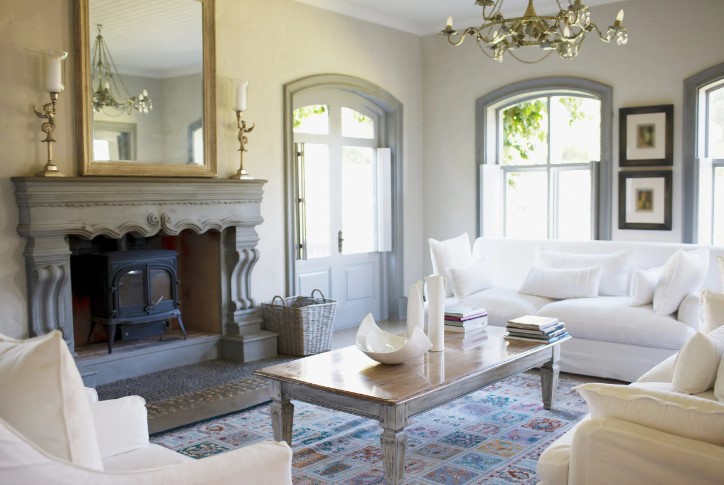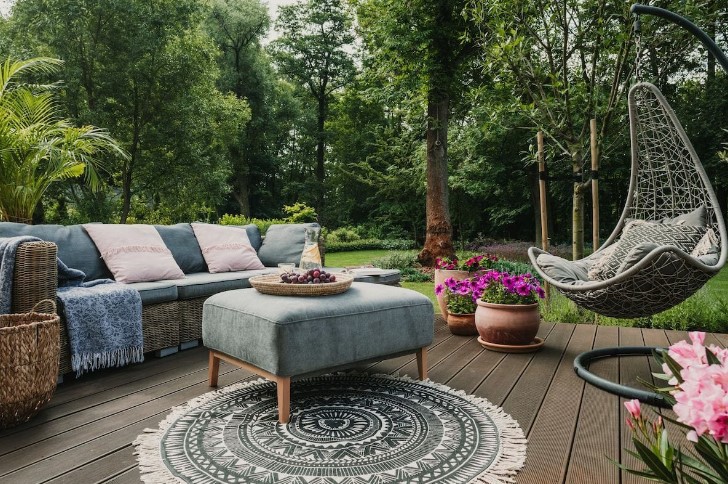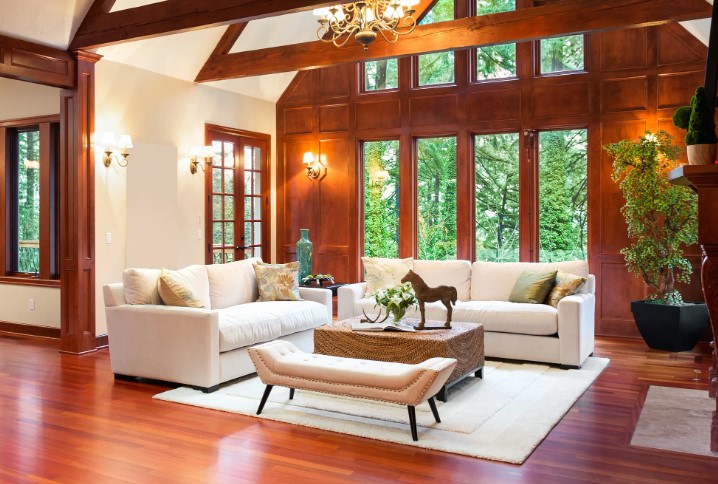
Home Interior Design
Introduction
When it comes to creating a comfortable and visually appealing living space, home interior design plays a crucial role. Whether you are moving into a new home or looking to revamp your existing one, the way you design your interiors can greatly impact the overall ambiance and functionality of your living space. In this article, we will explore various aspects of home interior design, from choosing the right color schemes and furniture to incorporating lighting and decorative elements that enhance the beauty of your home.
Importance of Home Interior Design
Your home is your sanctuary, and interior design plays a crucial role in creating a space that reflects your personality and meets your lifestyle needs. A well-designed interior can enhance comfort, promote relaxation, and increase the overall functionality of your home. By paying attention to the design elements, you can transform your living space into a place that truly feels like home.
Choosing the Right Color Scheme
One of the key elements of home interior design is selecting the right color scheme. Colors have the power to evoke certain emotions and set the mood in a room. Whether you prefer a vibrant and energetic atmosphere or a calm and serene ambiance, choosing the right colors for your walls, furniture, and accessories is essential.
To create a cohesive look, consider the existing architecture and natural lighting in your home. Warm colors like reds, oranges, and yellows can add energy and warmth to a space, while cool colors such as blues and greens create a sense of tranquility. Neutrals like grays, beiges, and whites provide a versatile backdrop that can be easily paired with various accent colors.
Furniture Selection and Placement
The furniture you choose and how you arrange it can greatly impact the functionality and visual appeal of your home. When selecting furniture, consider the size of your space, your lifestyle, and the overall style you wish to achieve. Opt for pieces that are both comfortable and aesthetically pleasing.
In terms of placement, ensure that there is enough space for easy movement and that furniture arrangements promote conversation and interaction. Balance is key, so avoid overcrowding or leaving large empty spaces. Pay attention to the focal points of each room and arrange the furniture accordingly to create a harmonious and inviting atmosphere.
Lighting and Its Impact on Interior Design
Lighting is a crucial aspect of home interior design as it can dramatically transform the look and feel of a room. Natural light is always ideal, so maximize it by using sheer curtains or blinds that allow sunlight to filter in. Additionally, consider incorporating different types of artificial lighting, such as ambient, task, and accent lighting, to create layers of illumination and highlight specific areas or objects.
Proper lighting not only enhances the aesthetics of your home but also serves functional purposes. It can make a room appear more spacious, improve visibility, and set the right mood for different activities. Experiment with different lighting fixtures, such as chandeliers, pendant lights, and floor lamps, to achieve the desired effect in each room.
Flooring Options for a Stylish Home
The flooring you choose can significantly impact the overall look and feel of your home. There are various options available, including hardwood, laminate, vinyl, carpet, and tiles. Each material has its own set of advantages and considerations.
Hardwood flooring adds warmth and elegance to a space, but it requires regular maintenance to keep it looking its best. Laminate and vinyl flooring offer durability and a wide range of styles at a more affordable price. Carpet provides a cozy and comfortable feel, especially in bedrooms and living rooms. Tiles are versatile and suitable for areas with high moisture, such as bathrooms and kitchens.
Consider the functionality, maintenance requirements, and aesthetic appeal of each flooring option before making a decision that complements your overall interior design vision.
Creating Functional and Organized Spaces
An essential aspect of home interior design is creating functional and organized spaces that cater to your daily needs. Carefully plan the layout of each room, taking into account the flow of movement and the activities that will take place in the space. Keep in mind the principles of ergonomics, ensuring that furniture and fixtures are arranged in a way that promotes comfort and efficiency.
Storage solutions are also vital to maintain a clutter-free environment. Incorporate built-in cabinets, shelves, and storage units that blend seamlessly with the overall design of the room. This will not only help you stay organized but also contribute to the aesthetic appeal of your home.
Incorporating Decorative Elements
Decorative elements play a significant role in adding personality and character to your home. From artwork and sculptures to plants and accessories, these elements can enhance the visual appeal and create a welcoming ambiance. Choose items that resonate with your personal style and complement the overall design theme.
When incorporating decorative elements, consider scale, proportion, and balance. Mix textures, patterns, and colors to create visual interest and focal points. Don’t be afraid to experiment with different arrangements and swap out items occasionally to keep your space fresh and inviting.
Maximizing Natural Light in Your Home
Natural light is a valuable asset in any home interior design. It not only provides a sense of openness but also contributes to our well-being. To maximize natural light, keep windows unobstructed and use light-colored curtains or blinds that allow sunlight to filter in.
Strategically place mirrors to reflect light and create the illusion of larger spaces. Consider using light-colored paint on walls and ceilings to enhance the brightness of the room. Additionally, position furniture and accessories in a way that does not block the flow of light.
Balancing Aesthetics and Functionality
An effective home interior design achieves a balance between aesthetics and functionality. While it is essential to create a visually pleasing environment, it should also meet the practical needs of the occupants. Consider the purpose of each room and design accordingly.
For example, in a living room, prioritize comfortable seating and easy access to entertainment systems. In a kitchen, focus on optimizing workflow and storage space. By striking the right balance between aesthetics and functionality, you can create a home that is both beautiful and practical.
Creating a Cozy Bedroom Retreat
Your bedroom is a sanctuary where you can relax and rejuvenate. When designing your bedroom, prioritize comfort and tranquility. Choose a soothing color palette, soft bedding, and comfortable mattresses to create a cozy atmosphere.
Consider incorporating elements like blackout curtains or blinds to ensure a restful sleep environment. Personalize the space with artwork, photographs, or decorative accessories that evoke a sense of calm and reflect your personal style.
Designing a Functional Kitchen
The kitchen is the heart of any home, and its design should focus on functionality and efficiency. Optimize the layout by placing the sink, stove, and refrigerator in a triangular configuration, commonly known as the work triangle. This allows for easy movement and efficient workflow while preparing meals.
Invest in quality appliances that suit your cooking needs and integrate well with the overall design. Ample storage space is crucial in a kitchen, so incorporate cabinets, drawers, and pantry organizers to keep everything organized and easily accessible.
Transforming Bathrooms into Relaxing Spaces
Bathrooms are often overlooked when it comes to interior design but are essential spaces for relaxation and self-care. Choose a color scheme that promotes a spa-like atmosphere, such as soothing blues or earthy tones. Incorporate elements like natural stone, soft lighting, and luxurious towels to elevate the overall aesthetic.
Pay attention to storage solutions in bathrooms as well. Utilize wall-mounted shelves or cabinets to keep toiletries organized and create a clutter-free environment. Consider installing a mirror with built-in lighting for a functional and stylish touch.
Sustainable and Eco-Friendly Interior Design
In today’s world, sustainability is a key consideration in interior design. Opt for eco-friendly materials, such as reclaimed wood, bamboo flooring, and low VOC (volatile organic compounds) paint. Invest in energy-efficient appliances and lighting fixtures to reduce energy consumption.
Incorporate plants into your interior design, not only for their aesthetic appeal but also for their air-purifying properties. Implement recycling systems and consider repurposing or upcycling furniture and accessories to minimize waste.
Utilizing Small Spaces Effectively
Not everyone has a large living space, but with smart design choices, even small areas can be transformed into functional and stylish spaces. Utilize vertical space by installing shelves or wall-mounted storage units. Choose furniture pieces that serve dual purposes, such as a storage ottoman or a fold-out sofa bed.
Opt for light-colored paint and mirrors to create an illusion of space and enhance brightness. Keep clutter to a minimum and maintain a clean and organized environment to maximize the available space.
Hiring a Professional Interior Designer
While many homeowners prefer to design their own interiors, hiring a professional interior designer can bring a unique perspective and expertise to the process. A professional designer can help you define your style, source materials, and execute your vision while ensuring functionality and aesthetics are balanced.
Consider consulting with an interior designer if you feel overwhelmed or need assistance in creating a cohesive and personalized home interior design.
Conclusion
Home interior design is a creative and exciting process that allows you to transform your living space into a reflection of your personality and style. By considering factors such as color schemes, furniture selection, lighting, and incorporating functional and decorative elements, you can create a home that is both visually appealing and functional.
Remember to prioritize comfort and functionality while staying true to your personal style. Whether you decide to take on the design yourself or seek professional assistance, the end result will be a home that you can truly enjoy and take pride in.
FAQs (Frequently Asked Questions)
- Can I change the interior design of my home without breaking the bank? Absolutely! There are numerous budget-friendly ways to update your home’s interior design. You can start by rearranging furniture, adding new accessories, or giving walls a fresh coat of paint. Small changes can make a big impact!
- How can I make a small room appear larger through interior design? There are several techniques you can use to create an illusion of space in a small room. Opt for light colors, utilize mirrors to reflect light, and choose furniture that doesn’t overwhelm the space. Additionally, keep the room clutter-free and maximize storage options.
- What are some popular interior design styles I can consider? There are various interior design styles to choose from, such as modern, contemporary, traditional, rustic, and Scandinavian, to name a few. Research different styles, explore their characteristics, and find the one that resonates with your personal taste and preferences.
- How can I incorporate sustainability into my home’s interior design? Sustainable interior design involves choosing eco-friendly materials, using energy-efficient appliances and lighting, and implementing recycling and waste reduction practices. Additionally, consider incorporating plants for improved air quality and embracing natural elements like wood and stone.
-
Is it necessary to hire an interior designer for my home? Hiring an interior designer is not necessary, but it can be beneficial, especially if you lack design experience or have a complex project. An interior designer can help you bring your vision to life, offer professional advice, and ensure that the design meets your functional and aesthetic requirements.
Partner Site : E-Sport News, Health Injury, Medical Cannabis, Finance Hold, Online Education, Travels Around World, Pet Daily Nursing, Beauty Women, Physical Therapy, House Design Plan
The Art of Tapestries
You May Also Like

Flooring Guide: Choosing Hardwood for Your Home or Business
February 10, 2024
Outdoor Furniture: Enhancing Your Outdoor Living Space
July 5, 2023
